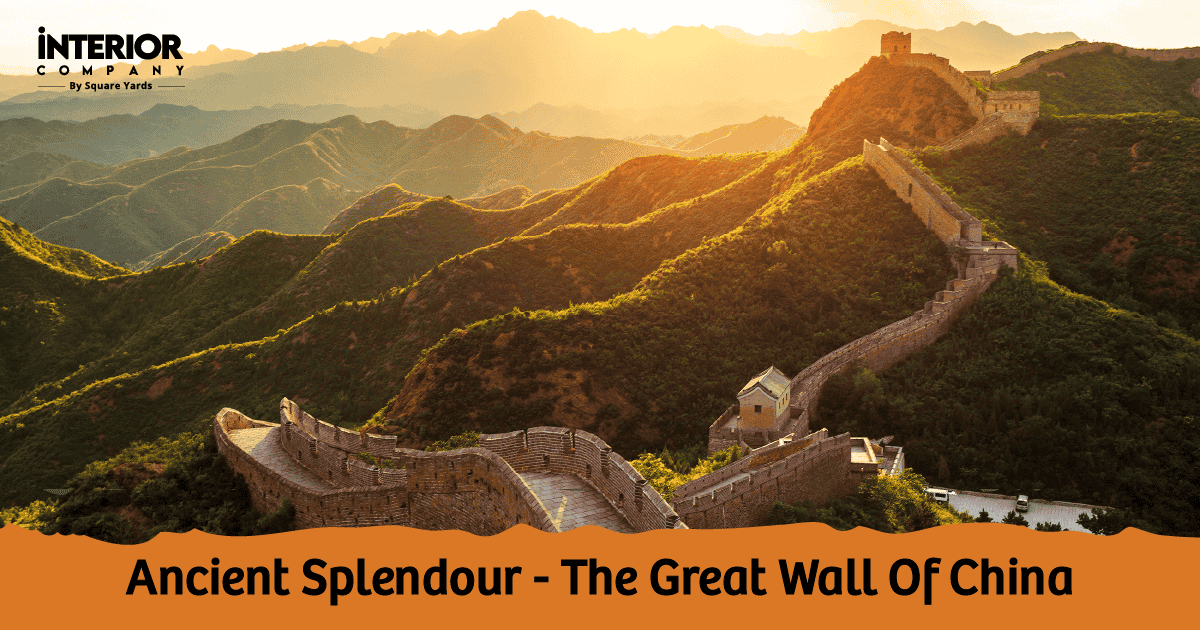Source: Pinterest
Why and When Was the Great Wall of China Built?
Stretching for an impressive 5,500 miles, the Great Wall of China was constructed over centuries by 20 different dynasties and rulers. Early versions of this enormous stone structure appeared in the 3rd century B.C. under the reign of the Qin Dynasty. Over the course of time, subsequent rulers put together more pieces of the wall until its completion in 1644. During the Ming Dynasty, the structure went through expansive renovations and some outstanding features, such as beacon towers and watchtowers, were built, adding to its monumental glory.
Also Read: Architectural Work of Le Corbusier
Originally, it was designed to protect the Chinese states from the invasions of nomadic tribes. Today, it represents the resiliency of China, becoming the symbol of power and strength in the world.
How Far Does the Great Wall of China Stretch?
The ancient Great Wall of China spans across approximately 13,170 miles, considering all the mountains, terrains, and deserts. Its most beloved section stretches 5,500 miles from Hushan to the Jiayuguan Pass. The superstructure is a profound example of human engineering and innovation in Chinese civilization.
Source: Pinterest
If you are wondering how thick the Great Wall of China is: The structure’s height varies from 15 to 39 feet and is 32 feet at its widest point. Truly mesmerising!
Width Of the Great Wall Of China
The Great Wall of China is a marvel in construction and was designed as a resilient structure against invaders, with a width ranging from 15 to 30 feet. It’s wide enough to endure weapons of ancient times, including bows, arrows, spears, and swords and protect the soldiers from external forces. The additional wall structures, sturdy battlements, beacon towers and watchtowers proudly stand as a timeless reminder of the remarkable feat of engineering and architectural prowess.
Also Read: All About World’s Longest Cantilever Bridge One Za’abeel
What Does the Great Wall of China Represent?
Today, the Great Wall of China exhibits national pride, unity, and defensive strength. For centuries, the astounding work and construction of the Great Wall of China have symbolised a rich cultural heritage, enduring its UNESCO World Heritage Site status. It is a reminder of the many historical artefacts, transformations, and glorious events that have been witnessed throughout time, giving an iconic stature around the globe. It encapsulates power, perseverance and determination to protect the national land and the heritage spirit of the country.
Source: Pinterest
Do you know notable people like Barack Obama, Michael Jordan, and Beyoncé have been seen sightseeing at the Great Wall of China?
Great Wall Of China Materials
Every region of the construction of the Great Wall of China utilised local resources, including masonry, rocks, and rammed earth, tailored to its distinctive geological conditions. However, the original Qin walls were erected of compacted earth and mixed with gravel, twigs and plant matter. Local people were coerced into manual labour to excavate the ground for construction and supply the materials. Later, the Ming Walls became more solid and imposing, with the baked bricks and stone slabs forming the outer layers. Moreover, the workers implied lime with sticky rice mortar between the bricks to ensure the longevity and durability of the wall.
Construction of the Great Wall of China
The awe-inspiring Great Wall of China, now a UNESCO World Heritage Site, continues to capture the intrigue and finesse of visitors from around the world. From its deep-rooted history to its architectural brilliance, innovative drainage system, and zig-zag pathways, it is a perfect example of human creativity and engineering prowess. This majestic wall has instilled a sense of pride and unifying spirit amongst countless generations in China.
*Images used are for illustration purposes only. Interior Company does not hold any copyright to the images unless mentioned explicitly.
